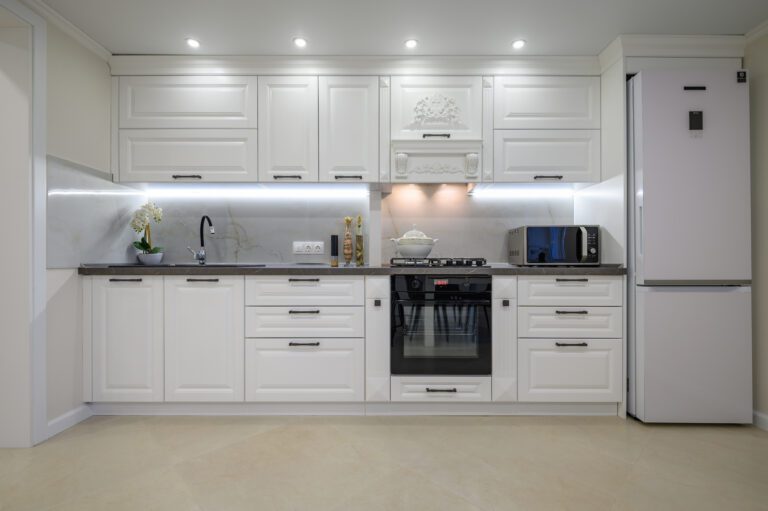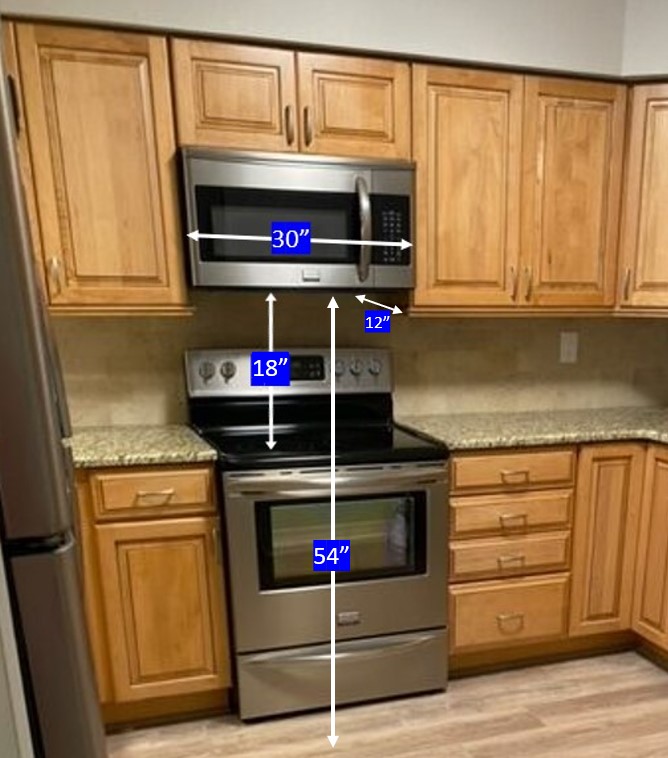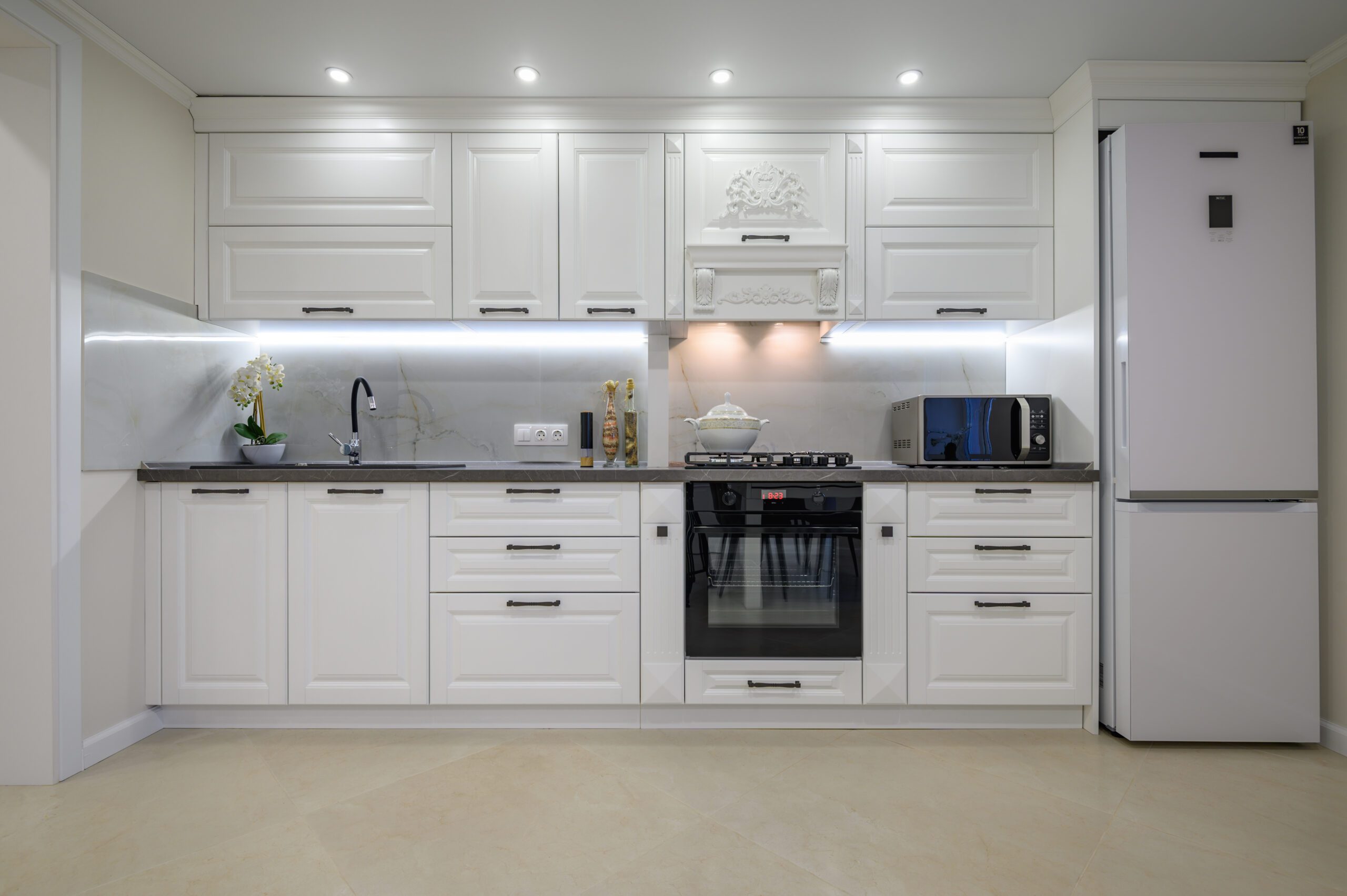
Introduction:
Welcome back to Trustworthy Home Advice, your go-to source for reliable and practical home renovation insights. In today’s post, we’ll discuss a detail that is often overlooked during kitchen renovations—the optimal distance between the microwave and stove. We are currently in the midst of refurbishing my daughter’s kitchen, fine-tuning such details has become really important to achieve a balance between elegance, safety, and functionality.
The Relevance of Strategic Appliance Placement
Understanding the importance of the distance between a microwave and stove is essential when designing a kitchen layout. Proper positioning ensures safety, enhances the lifespan of your appliances, and contributes to an efficient kitchen. A well-thought-out arrangement minimizes potential risks and aids in the longevity of both appliances.
Safety Considerations and Placement Precision
Prioritizing safety is essential when deciding the location of the microwave relative to the stove. A properly distanced microwave is shielded from the excessive heat, steam, and grease from the stove, maintaining its functionality and reducing risks. It is critical to avoid any placement where the heat and steam can interfere with the microwave’s operation.
Diverse Installation Alternatives and Their Requirements
There are specific installation nuances for over-the-range and countertop microwaves. The former is engineered to be positioned above a stove, often featuring integrated exhaust fans to handle the ascending heat and steam. The typical installation height is generally 18 inches above the stove. Countertop microwaves, however, require strategic placement away from high heat and grease, even though there is no defined required distance. Always consult the manufacturer’s guide and local building codes for accurate installation requirements. Most manufacturers will specify that a countertop microwave be at least 12″ away from the stovetop.
Over-the-range microwaves are fairly standard in size with most measuring around 30″ wide, 17″ high and 15″ to 18″ deep with the door closed 30″. Standard upper cabinets are typically 12″ deep as shown here, so the microwave will protrude proud of the cabinets by a few inches.
Typical installation for an over-the-range microwave requires it to be placed at a minimum of 18 inches above the cooktop surface, but the recommended height can be higher, depending on the specific requirements of the microwave model and the homeowner’s preference. However, the bottom of the microwave should generally not be higher than 54 inches above the floor to maintain accessibility.
In addition to vertical placement, you also need to consider the horizontal distance or clearance on either side of the microwave. This isn’t typically specified but should be enough to ensure that there is sufficient ventilation for the appliance, and that doors and handles of adjacent cabinets or appliances are not obstructed.
Always consult the manufacturer’s installation manual for the most accurate measurements and instructions for your specific microwave model and comply with local building codes to ensure safety and proper functioning.

Balancing Convenience with Accessibility
Besides safety and regulatory compliance, consider ergonomic design. Evaluate the convenience of access, the risk of dealing with hot substances, and the necessity of bending or reaching. A well-arranged kitchen allows for seamless workflow and diminishes unnecessary movements, optimizing the overall cooking experience.
Importance of Proper Clearance and Adequate Ventilation
Every microwave type requires ample surrounding space for optimal performance and to avert overheating. Proper ventilation is essential, and adherence to the manufacturer’s clearance recommendations is vital to avoid unforeseen operational issues.
Compliance with Building Codes and Manufacturer’s Guidelines
Adherence to local building codes and the microwave manufacturer’s instructions is vital when determining the distance between the microwave and stove. Consultation with kitchen design experts or qualified professionals ensures all installations meet safety standards and warranty stipulations.
Conclusion: Crafting a Well-Integrated Kitchen Space
Establishing the correct distance between microwave and stove is a seemingly minor yet critical component of kitchen design. As we progress with my daughter’s extensive kitchen renovation, attention to detail is paramount, ensuring the final result is a fusion of style, safety, and practicality. Following established guidelines and best practices allows for the realization of a cohesive and delightful kitchen, enriching your home’s overall appeal. The cabinetry and appliances are due within a week of the time of this writing, we’ll update this post with pictures of the installation at a later date
We hope this manual provides you with the trustworthy advice needed to make well-informed decisions throughout your renovation journey. For more expert advice and home renovation tips, keep exploring Trustworthyhomeadvice.com.
Be sure to check out our post on 25 Homeowner Hacks – 5 tips every Homeowner should know!




